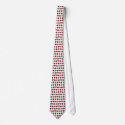Have you ever played cards and suddenly wondered why we call the Jack cards Jacks? It seems a bit strange and out of place considering the other picture cards are a King and a Queen. Why not call it a Prince or a Knight?
Originally Jacks weren’t called Jacks at all…
If you go back to the very beginning of the history of playing cards, you’ll find that the first European decks had picture cards that were very different from our picture cards today. Instead of the King, Queen and Jack, there was:
- King
- Cavalier – a sort of knight or soldier on horseback.
- Knave – a humble male servant in the Royal household
So, the original Jacks were actually called Knaves.
Around the 1400s the Queen replaced the Cavalier, but the Knave and King remained. The Jack card was called a Knave right up until the 1800s.
How the Jack got its name
It is unclear exactly how the Jack card got its name, but there is one theory in circulation.
This theory is that the Jack term originates from cricket. In a game of cricket, the worst batsman was often chosen as the last batter. There are eleven members in a cricket team, so the last batter was 11th to bat. Team mates would cajole their shoddy batter, calling him “Last man Jack” (Jack was a term for the every man, like in the term “average Jack” and “Jack of all trades”. Since this average Jack was always last to bat, the term “Last man Jack” caught on).
So “Jack” became associated with the number 11, making it a good candidate to become the 11th card in a deck of cards, particularly amongst the cricket-loving common-folk who played in pubs and the likes. This is likely to have been the case from the 1600s onwards.
One card game that was very popular in pubs was called “All Fours” and it is through this game that the term Jack spread amongst the common-folk. However whilst the term Jack was used by “the vulgar commoners”, the term Knave was still the “proper” name for the card.
So how did the Jack come to replace the Knave completely?
In the 1800s there was a new trend of putting an initial of the card’s name in the upper corners. King had a little K, Queen had a little Q, and the Knave had a little Kn. People found the Kn cards too similar to the K cards, so in 1864 one English Cardmaker called Samuel Hart decided to solve the problem by replacing the Kn with a J, for Jack. He reasoned that the importance of clarity surpassed the importance of using the upper class terminology.
Some of the upper classes continued to deride people who called Knaves Jacks, as is clear by the quote from Charles Dickens’s Great Expectations (1861) where the character Estelle laughs at Pip saying: “He calls the knaves, Jacks, this boy!”
But in the end, unambiguity won, snobbery lost and the Jack lives on to this day.
Related articles
- £: Why do we have the pound symbol?
- Smart Alec: Why do we say someone is a “Smart Alec“?
- RSVP: Why do we write RSVP on invitations?
- Why do we clap in performances?







